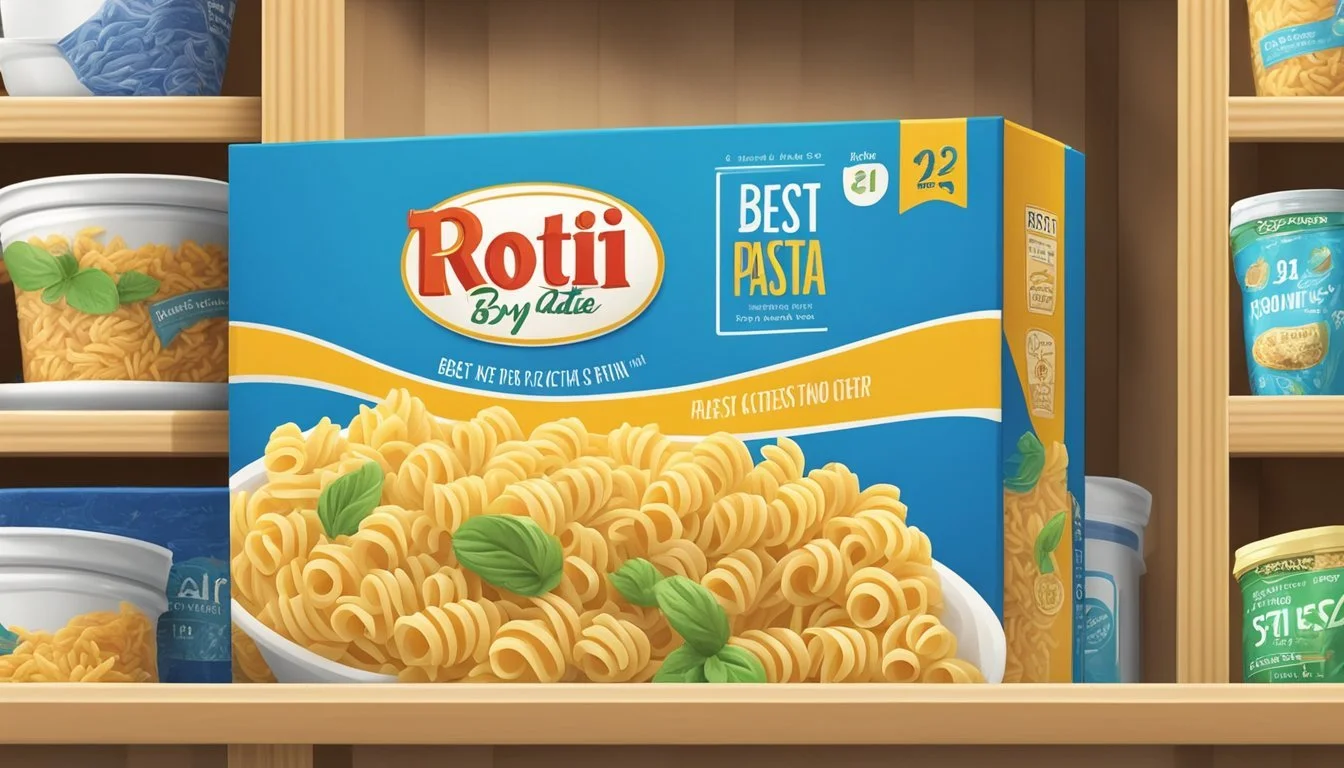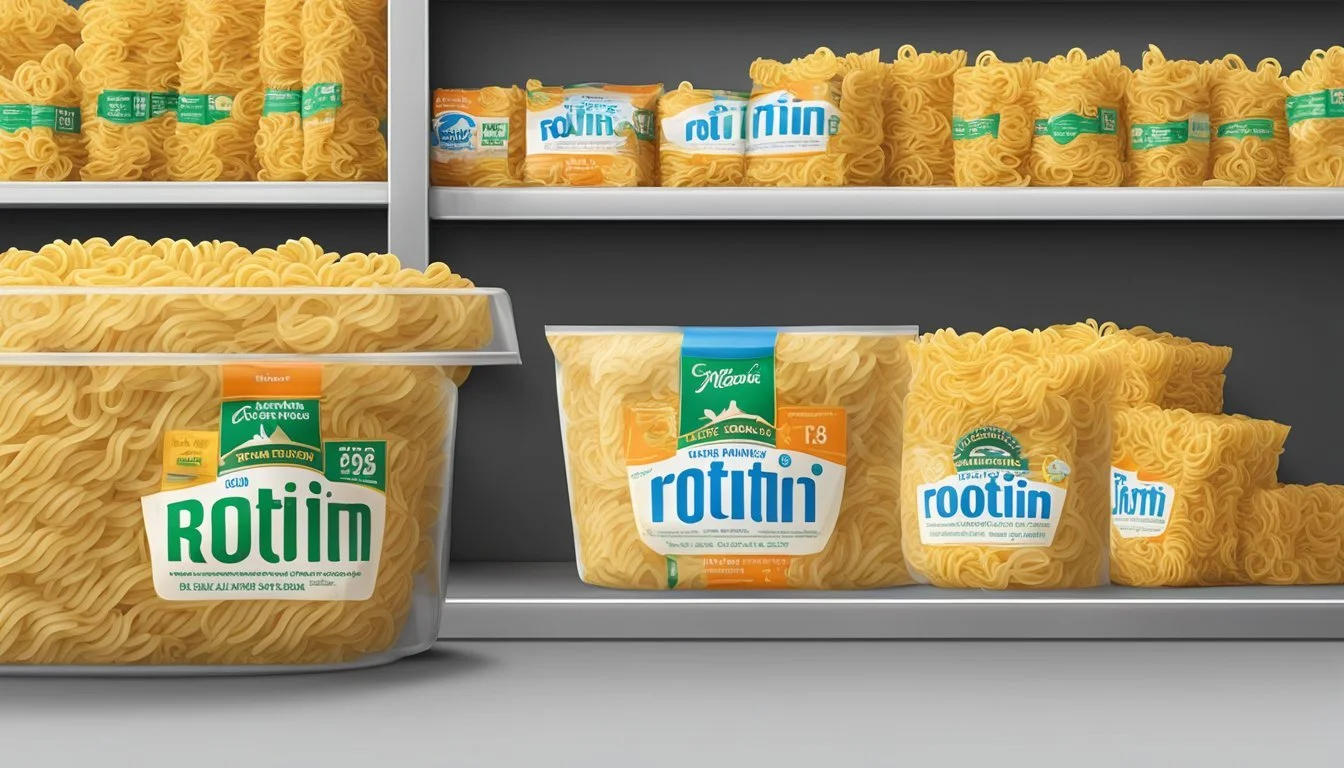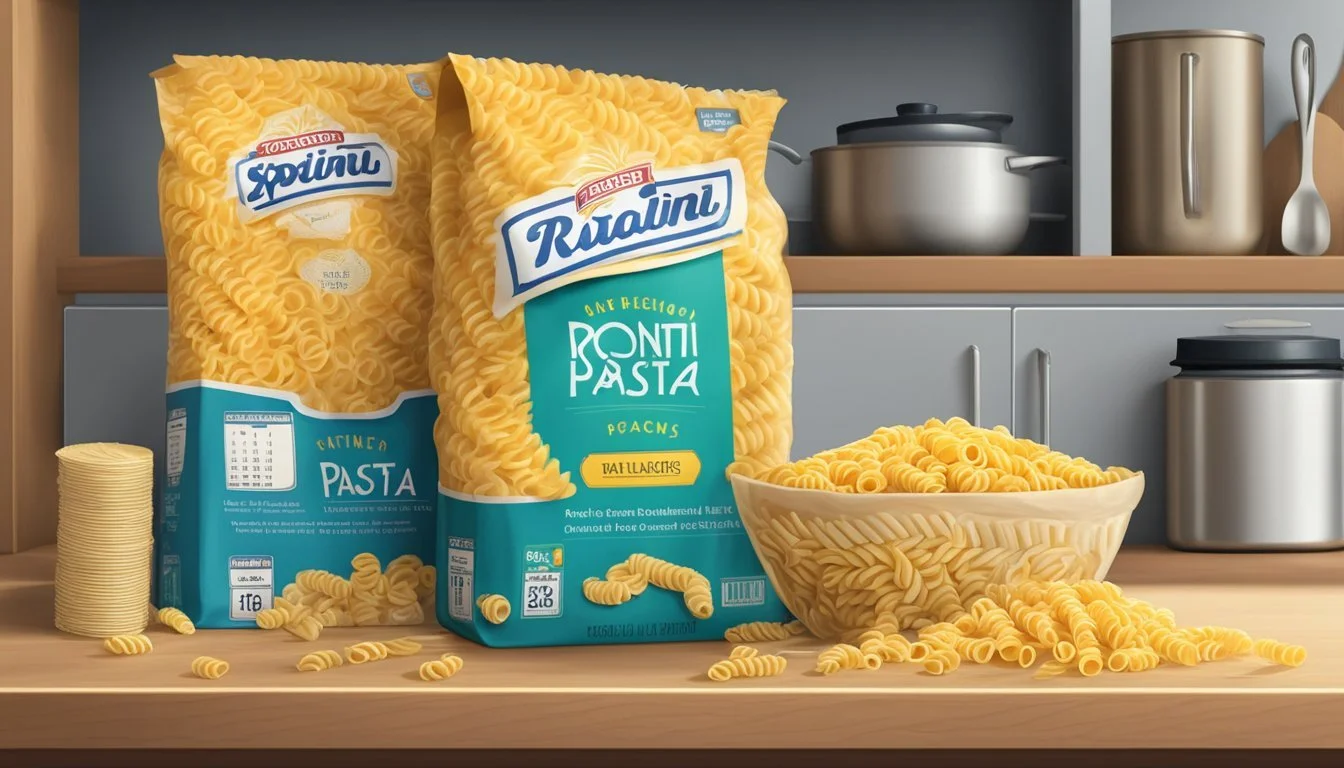How Long Does Rotini Pasta Last?
Shelf Life and Storage Tips
Rotini pasta , with its corkscrew shape, is a popular choice for many pasta (What wine goes well with pasta?) dishes. The shelf life of rotini, like other types of pasta, varies depending on whether it is dry or cooked. Uncooked dry rotini pasta generally has a long shelf life due to its low moisture content, which inhibits the growth of spoilage-causing microorganisms. Typically, dry rotini pasta maintains its best quality for about three years when stored at room temperature in a tightly sealed package.
Once cooked, the shelf life of rotini pasta is significantly reduced. Refrigeration is crucial for maintaining the safety and quality of cooked pasta. When stored properly in shallow airtight containers or resealable plastic bags, cooked rotini pasta can last for 1-2 months in the refrigerator. The key to preserving its quality is to refrigerate the pasta within two hours of cooking, which minimizes the risk of bacterial growth.
Understanding Pasta Types
When exploring the longevity of rotini pasta, it is crucial to distinguish between dry and fresh pasta (how long does fresh pasta last?), as well as understand the specific characteristics of rotini pasta.
Difference Between Dry and Fresh Pasta
Dry pasta, made from durum wheat and water, is extruded or cut into shapes and then dried at low temperatures for storage. Fresh pasta, often incorporating eggs and a higher moisture content, is not dried and typically has a shorter shelf life. Dried pasta can be stored for extended periods – often up to two years in a cool, dry place – whereas fresh pasta may last a few days in the refrigerator or up to a couple of months if frozen.
Characteristics of Rotini Pasta
Rotini pasta is recognized by its spiral shape and external ridges that are excellent for capturing sauces. This pasta type is traditionally made from semolina flour (how long does semolina flour last?), derived from durum wheat, which provides a firm texture and a good source of gluten. When preparing homemade rotini pasta, one might use a mix of semolina and all-purpose flour to achieve the desired consistency and flavor. In comparison to its close relative, fusilli, which has tighter twists, rotini's spirals are shorter and lend themselves well to a variety of dishes, including pasta salads and meat sauces.
Storage Fundamentals
Effective storage is crucial for maintaining the shelf life and quality of rotini pasta. Understanding the optimal conditions and appropriate methods can greatly influence how long pasta retains its desirability for consumption.
Optimal Storage Conditions
For unopened pasta, it's recommended to store it in a cool, dry area such as a pantry. This environment minimizes exposure to moisture and heat, which can lead to degradation. Room temperature is typically suitable, but areas that stay consistently below normal room temperature are ideal.
Impact of Storage on Pasta Quality
The quality of pasta during storage is contingent on environmental conditions. Excess moisture or heat can cause pasta to become stale or develop mold. Conversely, if stored properly, pasta maintains its quality and texture, ensuring it remains palatable and safe to consume for extended periods.
Storing Unopened Pasta
Unopened rotini pasta should remain in its original packaging until use. This packaging is often designed to protect the pasta from the elements. For best results, place the unopened package within an airtight container to guard against any inadvertent exposure to moisture or contaminants.
Best By Date: Heed the "best by" or "best if used by" date on packaging as an indication of optimal quality rather than safety.
Best Practices for Opened Pasta
Once opened, pasta should be transferred to an airtight container to maintain freshness. Ensure that the container is tightly sealed after each use to prevent the ingress of moisture and other compromising factors.
Storage Tip: Label the container with the date of opening to help keep track of how long the pasta has been stored.
Shelf Life Guidelines
When considering the shelf life of rotini pasta, it is important to distinguish between dried and fresh variants as well as to understand the meaning of expiration dates provided by manufacturers.
Shelf Life of Dried Pasta
Dried rotini pasta, a popular pantry staple, typically offers an excellent shelf life due to its low moisture content. When stored properly at room temperature, dry rotini pasta is generally at its best quality for about 3 years. It is a highly shelf-stable product, which makes it a valuable item for long-term storage.
Shelf Life of Fresh Pasta
In contrast, fresh rotini pasta, which contains more moisture than its dried counterpart, has a much shorter shelf life. Generally, fresh pasta should be consumed within 1-3 days of purchase when stored in the refrigerator. For homemade pasta, one can expect a similar time frame unless specific preservation methods are used.
Reading Expiration Dates
The dates marked on pasta packaging, often labeled as "best by" or "use by," serve as a guide for optimal quality rather than a hard cutoff for safety. Dried pasta does not suddenly become harmful to consume after the best by date, but there might be a slight change in taste or texture beyond this point. Consumers should read these labels as part of an overall assessment of the pasta's quality which includes examining the pasta for signs of spoilage such as changes in color, scent, or presence of pests.
Recognizing Spoilage
When it comes to pasta spoilage, there are specific signs that indicate whether rotini pasta has gone bad. These signs help ensure that consumers can protect themselves from potential health risks associated with spoiled food.
Signs of Deterioration in Pasta
Texture: Fresh pasta should be firm and consistent in texture. If the pasta is slimy or sticky, it may have begun to spoil.
Appearance: Look for signs of discoloration or specks of mold on the pasta. Any significant deviation from its original color is a cause for concern.
Flavor: If the pasta has an off flavor or tastes different than usual, it's best to discard it.
Odor: An unusual or foul smell is a strong indicator that rotini pasta is no longer safe to consume.
Health Risks of Spoiled Pasta
Spoiled pasta can host foodborne bacteria such as salmonella or E. coli, leading to foodborne illness. Symptoms may include nausea, vomiting, and diarrhea. Exposure to mold can also cause respiratory problems and allergic reactions in some individuals. It is essential to err on the side of caution and discard any pasta that shows signs of spoilage.
Extending Pasta's Shelf Life
To maintain quality and extend its shelf life, one should store rotini pasta correctly and employ proper freezing techniques. Utilizing airtight containers can significantly prolong pasta's usability, while correctly handling thawed pasta ensures it remains safe to consume.
Proper Freezing Techniques
One can freeze rotini pasta to significantly extend its shelf life. For optimal results, one should:
Cool the pasta completely before freezing to prevent ice crystal formation.
Pack the cooled pasta in airtight containers or freezer bags, removing as much air as possible.
Label containers with the freezing date to keep track of how long the pasta has been stored.
Store in the freezer at a constant temperature to preserve the pasta's texture and taste.
Handling Thawed Pasta
The handling of thawed rotini pasta is crucial:
Thaw the pasta in the refrigerator overnight to ensure it maintains a safe temperature.
If in a hurry, submerge the airtight container in cold water to accelerate thawing.
Once thawed, the pasta should be eaten within 24 hours and not be refrozen to maintain its quality and prevent bacterial growth.
Thawed pasta can be reheated directly in a sauce or by dropping it into boiling water for a few seconds to restore its warmth and pliability.
Cooking and Reheating Pasta
When preparing and reheating rotini pasta, achieving the perfect texture and flavor is key. Proper storage methods also ensure that cooked pasta retains its quality.
Preparing Rotini Pasta
To cook rotini pasta, first, boil a large pot of water with a pinch of salt. When the water reaches a rolling boil, add the rotini pasta and continuously stir to prevent sticking. Cook the pasta for approximately 8-10 minutes for an al dente texture; however, the exact cooking time can vary by brand so consulting the package's instructions is advised. Once cooked, drain the pasta and rinse with cold water to stop the cooking process if it will not be served immediately.
Reheating Leftover Pasta
Reheating leftover rotini should be done carefully to preserve its quality. Place the cooked pasta in a microwavable dish, adding a little bit of water, sauce, or olive oil to prevent dryness. Cover the dish loosely to allow steam to escape. Microwave the pasta for 1 to 1 ½ minutes, stir, then heat in additional 15-second increments until thoroughly warmed. If the pasta was stored without sauce, it can alternatively be revived by quick submerging in boiling water for about 30 seconds to a minute.
Uses and Recipe Suggestions
Rotini pasta's distinctive spiral shape makes it an excellent choice for holding onto sauces and dressings. Its versatility lends itself to a wide range of culinary applications, from hearty meals to light salads.
Creative Ways to Use Rotini Pasta
Pasta Salad: Rotini pasta is ideal for cold pasta salads. Its grooves catch and hold dressing, ensuring every bite is flavorful. Toss with olive oil, cherry tomatoes, basil, and mozzarella for a simple yet delicious dish.
Baked Pasta: For a comforting meal, baked rotini pasta with marinara sauce, ground meat, and a blend of cheeses creates a satisfying dish. The sauce clings to the pasta, while the cheese provides a gooey topping when baked until golden.
Stir-Fry: One can sauté rotini pasta with vegetables, such as bell peppers and onions, in olive oil, and add a protein like chicken or tofu. Season with red pepper flakes (how long do red pepper flakes last?) for a spicy kick. This approach offers a textural contrast between the soft pasta and crisp vegetables.
By leveraging rotini pasta's design, one can ensure that each dish is not just fulfilling but also offers an appealing mix of flavors and textures.
Conclusion
Dry rotini pasta, when stored properly, maintains best quality for about three years at room temperature. The storage conditions are critical; the pasta should be kept in a tightly sealed package away from moisture and heat. After the "best by" date, while the pasta's quality may decline, it doesn't necessarily render it unsafe to eat.
Cooked rotini pasta, however, has a shorter lifespan. In the refrigerator, at a consistent temperature of 40°F or below, cooked rotini can be safe to eat for 3 to 5 days. Outside of this, especially at room temperature, it has a window of 2 hours before it's at risk for bacterial growth.
Consumers should consider the following points:
Texture: Over time, even dry pasta can lose its firmness.
Flavor: There may be a subtle change post the "best by" date.
Safety: It remains safe beyond the date, provided there's no sign of spoilage.
Storage Tip: Always seal dry pasta in an airtight container or its original package.
To assess the quality of pasta, look for changes in color, smell, or presence of pests. These signs indicate spoilage, and the pasta should not be consumed. By following these guidelines, consumers can ensure they enjoy rotini pasta that is both safe to eat and of satisfactory quality.








